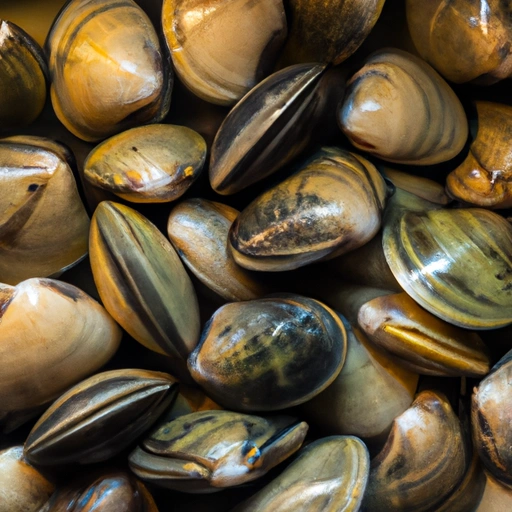Clam
Description

Clams are a type of shellfish found in fresh and saltwater environments, beloved for their sweet, briny flavor and tender texture. They come in various shapes and sizes, with some of the most common species being the hard-shell clams (like littlenecks, cherry stones, and quahogs) and the soft-shell clams. Clams are a versatile ingredient that can be used in an array of recipes, offering a taste of the sea to any dish.
Common uses
Clams are frequently used in soups, pasta dishes, appetizers, and as a main course. They are often steamed, grilled, or baked and can be eaten raw, such as in clams on the half shell. Clams are also a common ingredient in seafood stews and chowders, lending their rich, oceanic flavor to the broth.
Nutritional value
Calories
Clams are low in calories, with about 126 calories per 100 grams (3.5 ounces) or roughly 22 calories per small clam (10g).
Protein
They are an excellent source of protein, offering about 25 grams per 1 cup (160g) or 2 grams per small clam.
Fat
Clams contain minimal fat, with less than 2 grams per 100 grams serving, most of which are heart-healthy unsaturated fats.
Carbohydrates
They have a negligible amount of carbohydrates, with less than 5 grams per 100 grams serving.
Vitamins
Clams are rich in vitamins, particularly B12, with a 100 grams serving providing over 1,400% of the recommended daily value.
Minerals
They are also a good source of minerals such as iron, selenium, zinc, and manganese, essential for various bodily functions.
Health benefits
Consuming clams can contribute to heart health, improve brain function due to their high B12 content, and aid in energy production. The iron content in clams can help prevent anemia, while their zinc and selenium contents support immune function.
Potential risks
Some potential risks of consuming clams include allergic reactions, exposure to contaminants or pathogens if harvested from polluted waters, and high sodium content in canned varieties. It's essential to source clams from reputable suppliers to minimize these risks.
Common recipes
Common recipes include New England clam chowder, linguine with clam sauce, stuffed clams, and clams casino. Clams are also featured in various international dishes such as paella and miso soup.
Cooking methods
Clams can be steamed, boiled, grilled, or baked. When cooking clams, it's crucial to discard any that do not open after cooking to avoid potential health risks.
Pairing with other ingredients
Clams pair well with white wine, garlic, butter, lemon, herbs such as parsley and thyme, and vegetables like tomatoes and bell peppers.
Summary
Clams are a delicious and nutritious seafood ingredient with a rich history in many cultures. Whether steamed, baked, or added to soups and stews, clams provide a unique flavor and numerous health benefits. When safely sourced and properly prepared, they can be a wonderful addition to a healthy diet.